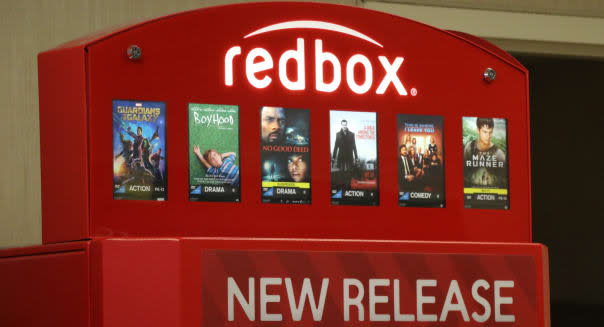Redbox Isn't the Bargain It Once Was

There's something rotten at Redbox. Sure, those shiny kiosks outside of convenience stores, supermarkets and drugstores seem busy. They spat out 146 million DVDs, Blu-rays and video game discs during the quarter consisting of April, May and June. That's a lot of media being rented out, but it was actually 13 percent less than the 168 million discs it loaned out to entertainment-hungry patrons a year earlier.
Outerwall (OUTR), the parent company behind Redbox, knows that it has a problem. The days of renting physical copies of movies and games appear to be numbered. We're living in a digital age where broadband-tethered homes have limitless entertainment options. There's no better example of the migration from DVD to digital streaming than Netflix (NFLX). The leading premium video platform has seen its digital platform rise to 65.5 million worldwide subscribers from 50 million over the past year. In that time, it has seen its original DVDs-by-mail audience shrink to just 5.3 million from 6.3 million accounts.
%VIRTUAL-WSSCourseInline-956%Redbox may have been helped out initially by the death of Blockbuster and other indie video stores. Folks had fewer places to go for a weekend video fix. However, the same trend against physical rentals that has pushed into the mainstream with smart TVs and set-top devices is now starting to gnaw at its own viability. Outerwall tried to give it a shot, teaming up with Verizon (VZ) in rolling out Redbox Instant in 2013. Offering monthly subscriptions that included streaming and kiosk rentals seemed like a smart approach, but the digital catalog was too weak. It didn't work. Redbox Instant shut down last October, and that's when Outerwall kicked in with its second major price increase since 2011.
Pricing Itself Into Eventual Extinction
A few weeks after nixing Redbox Instant, Outerwall juiced up its nightly rental rates. DVDs rose to $1.50 from $1.20. Blu-ray discs climbed 50 cents to $2, and video games went up an entire buck to $3 a night.
Increasing its DVD, Blu-ray and video game rates by 25 percent, 33 percent and 50 percent, respectively, was a big move. It followed a move in late 2011 when DVDs climbed to $1.20 a night from $1. We're talking about a dramatic 50 percent rate increase in a span of three years for a Redbox DVD rental.
DVD retail prices haven't increased by 50 percent in that time. Access to digital downloads has made movies seemingly cheaper. Netflix's mail-order DVD business has held firm at $7.99 a month. Redbox prices have gone higher because it's what Outerwall needs to justify the shrinking volume. It's not what consumers expect to pay and fading usage proves that it's not a move based on demand.
Redbox kiosks won't go away overnight. The installed base of DVD players will be significant for several more years. However, as thinning rentals force it into potentially more price hikes and eventually kiosk closures, it will continue to alienate consumers. It's not the bargain that it used to be at a time when access to video entertainment has never been easier.
Motley Fool contributor Rick Munarriz owns shares of Netflix. The Motley Fool recommends Netflix and Verizon Communications. The Motley Fool owns shares of Netflix. Try any of our Foolish newsletter services free for 30 days. Check out The Motley Fool's one great stock to buy for 2015 and beyond.

